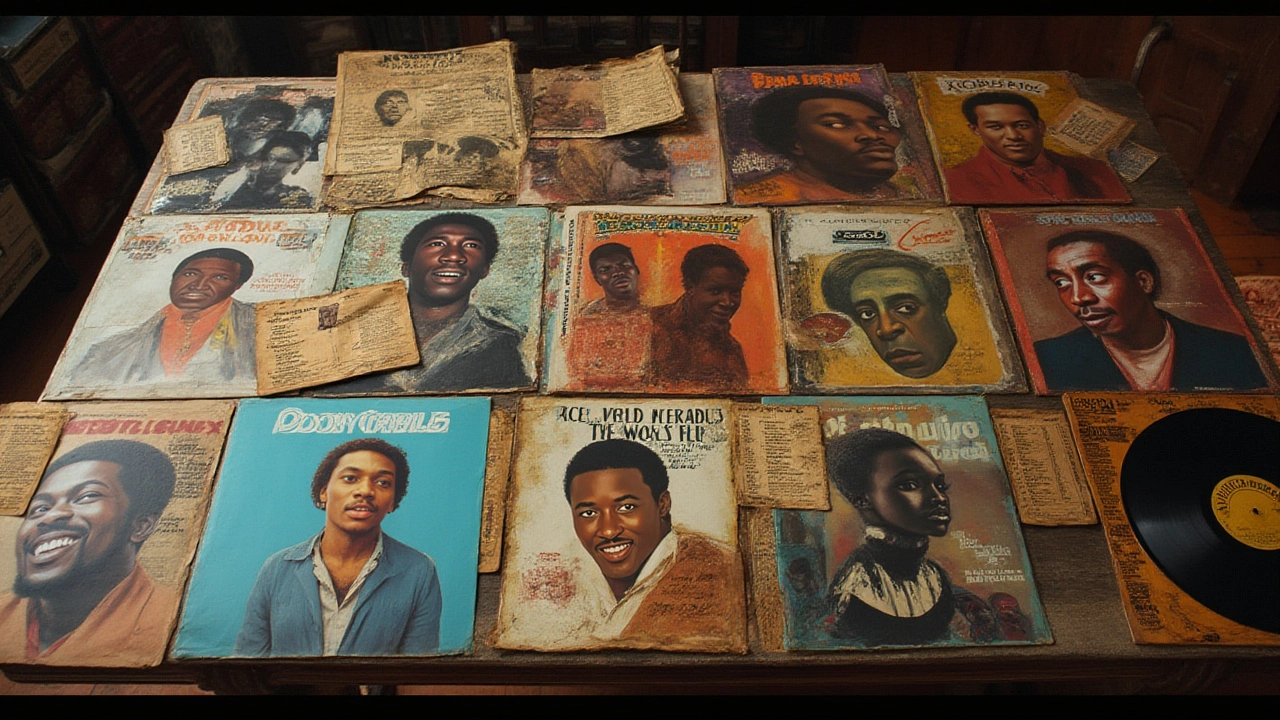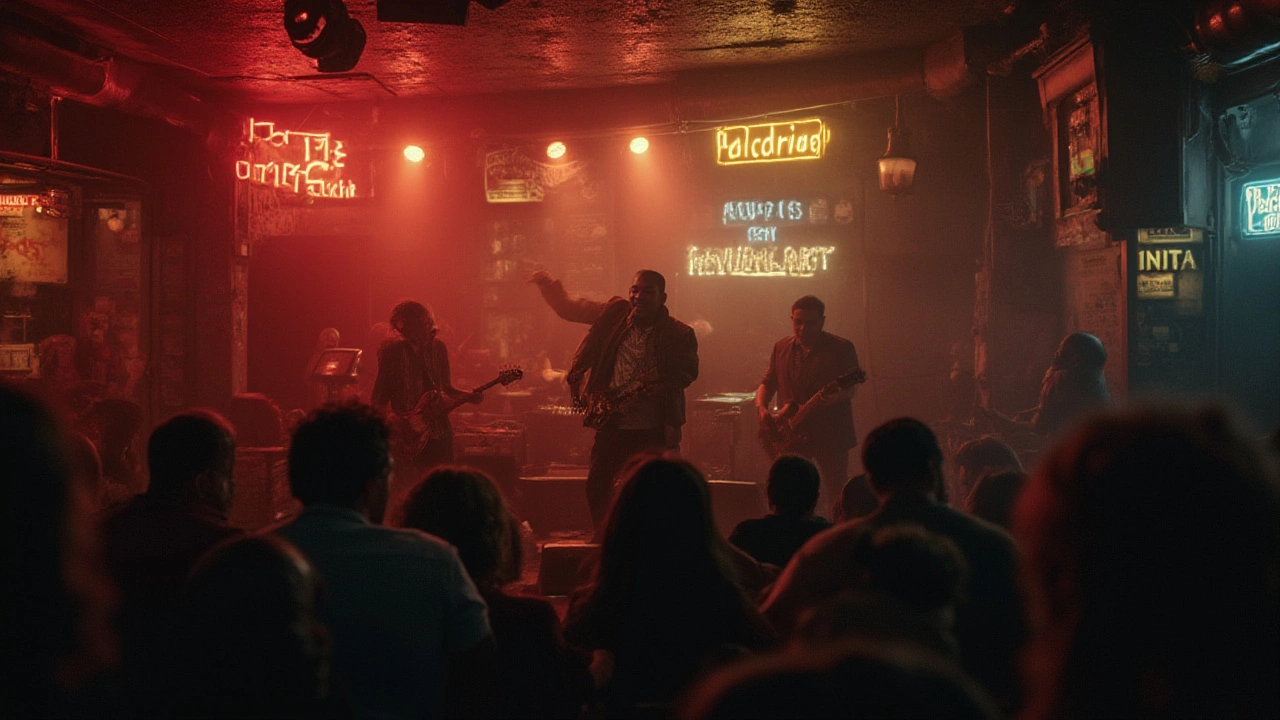If you think of soul music and only picture Marvin Gaye or Aretha Franklin, you’re missing half the magic. Soul cuts deeper than the radio hits; it pulses behind the scenes, where masterminds wrote, produced, and belted their hearts out but got none of the limelight. Some shaped the genre, changed the game, and still don’t get name-dropped nearly enough. Ready to change that? These are the faces, fingertips, and vocals that built the soul legacy from the ground up and never quite made it to household-name status.
The Roots of Soul: Foundations Laid Out of Sight
Soul didn’t just emerge from nowhere—its heartbeat comes from a fusion of gospel, R&B, and blues, shaped in countless church basements and smoky nightclubs. We often overlook the pioneers who gave soul its foundation. Ray Charles is front-and-center in any discussion, but have you ever heard of Willie Mae "Big Mama" Thornton? Before Elvis swaggered through “Hound Dog,” it was Thornton’s raw, powerhouse delivery that defined the song in 1952. Thornton’s original version sold nearly two million copies before Elvis, and her growl set a standard for soul that echoed through future generations.
Dig deeper and you’ll spot another overlooked hero: Sister Rosetta Tharpe. She mashed up gospel with electric guitar licks, laying the groundwork for soul, R&B, and even rock 'n' roll. Her energetic stage presence influenced little-known talents like Sam Cooke before he broke out on his own. Sam Cooke himself was a point between old and new, but without the likes of Bobby "Blue" Bland, the tapestry of smooth, emotionally-wrought soul wouldn’t be complete. Bland’s use of subtle vocal phrasing inspired entire generations of smooth crooners—just listen to the way his 1961 hit "I Pity the Fool" still tingles the spine.
Songwriting duos deserve just as much love. Ashford & Simpson, known to diehard soul fans but rarely outside those circles, penned indelible staples like “Ain’t No Mountain High Enough” and reshaped the Motown landscape. They crafted bridges and background hooks that made voices like Tammi Terrell and Marvin Gaye shine brighter—and they fought to get writing credit at a time when labels casually buried the names of their Black creators.
Another pillar? Curtis Mayfield, whose band The Impressions helped establish the civil rights anthems at the heart of soul. But what’s less known is how Mayfield quietly mentored lesser-known acts from The Staple Singers to Jerry Butler, elevating their sounds. He lent a hand in the studio, guided songwriting, and kept everything grounded in real struggle and hope.
Take a look at the first real data about soul’s unsung backbone—session musicians. The "Funk Brothers," the anonymous backbone of Motown, played on more number-one hits than The Beatles, Elvis, The Rolling Stones, and The Beach Boys combined. Yet, until the 2002 documentary "Standing in the Shadows of Motown," most fans had never heard their names. And if you want a fun trick for your next trivia night: these players, not the stars up front, gave Motown its signature snap, crackle, and pop.
Session Musicians: Soul’s Behind-the-Scenes Powerhouses
The magic of soul music often lies in the subtle rhythms and textures you don’t even realize you’re hearing. A lot of that comes directly from session musicians—those hired hands who could play any groove, fill in for any artist, and write entire hits on the fly. The “Muscle Shoals Rhythm Section,” aka “The Swampers,” operated out of a small Alabama studio and created the sound bed for Wilson Pickett, Percy Sledge, and even Aretha Franklin. These players weren’t just background noise; their intuitive musical shorthand and laidback style changed the tone of soul in the 1960s and ‘70s.
If Otis Redding’s “Try a Little Tenderness” gives you chills (and how could it not?), tip your hat to the crack band behind him. Booker T. & the MG’s, Stax Records’ house band, cooked up those crisp grooves and bright horn sections behind hits from Otis to Sam & Dave. Steve Cropper, their guitarist, wrote and played on some of the label’s hottest singles, but he remained almost invisible compared to the big-voiced stars he worked with. Cropper’s riff on "(Sittin’ On) The Dock of the Bay" is as classic as Otis’s vocals.
Backing vocalists brought just as much fire. The Sweet Inspirations, Cissy Houston’s group, delivered harmonies on tracks for Aretha Franklin and Dionne Warwick. Without their harmonized hooks, many songs would lose half their soul punch. Meanwhile, Martha Wash—sometimes called "The Most Famous Unknown Singer of the '90s"—was laying down powerhouse vocals for dance hits and soul tracks, rarely getting proper credit.
To get a sense of how much these unsung musicians contributed, check out the following data that compares their hit output against artists you know better:
| Group / Musician | # of #1 Hits Supported | Mainstream Fame Level |
|---|---|---|
| The Funk Brothers (Motown) | 25 | Low |
| Booker T. & the MG’s (Stax) | 15 | Medium |
| Muscle Shoals Rhythm Section | 20 | Low |
| Mainstream Artist (Aretha Franklin) | 20 | High |
| Mainstream Artist (Marvin Gaye) | 5 | High |
What made these session musicians so impactful? Simple: versatility and humility. They could adapt to an artist’s personality, flip between styles in one night, and never complain when their names stayed off the record. Most of them stuck to a grueling schedule—some even playing on up to four hit tracks a day during Motown’s golden era.
If you want to spot these players in action, try zeroing in on key instrumental hooks: James Jamerson’s basslines slither through classics like “My Girl” by The Temptations. Cropper’s biting guitar setups are the spice in “In the Midnight Hour.” If you want listening tips, dig into the isolated tracks or watch those few rare live session recordings. With your ears open, you’ll start to pick out the personalities behind the notes.

The Producers, Writers, and Architects of Soul
You hear the track, but rarely do you learn about the hands that pieced it together in the studio. Soul music’s biggest hits owe as much to thoughtful production and gritty songwriting as they do to golden voices. Sylvia Moy at Motown co-wrote hits like “Uptight (Everything’s Alright)” for Stevie Wonder, helping launch him out of child-star territory and into the legend we know. She coached nervous singers, fought for fairer contracts, and insisted on creative control in a man’s world—a rare feat at the time.
Then, there’s Gamble and Huff from Philadelphia. If the “Philly Soul” sound feels uplifting, orchestrated, and smooth as butter, you have them to thank. Their work with Harold Melvin & the Blue Notes and The O’Jays created lush landscapes layered with strings and horns. These producers were masters at setting tone and mood—think of “Love Train” (a strong soul music hit) and how it manages to sound both cheerful and revolutionary. Their style echoed far beyond their home turf, reshaping disco and pop in its wake.
Not to be forgotten, Isaac Hayes—yes, the deep-voiced singer, but more so as the producer and arranger at Stax. Before “Shaft,” Hayes was the secret sauce in hits like “Soul Man,” building complex arrangements and pushing the use of orchestral touches. His style led to the “blaxploitation” soundtracks of the ‘70s—fusing cinematic sweep with the grit of classic soul.
If you’re ever curious how a song that took two days to write sounds so perfect, know it’s rarely by accident. Holland–Dozier–Holland, Motown’s go-to songwriting powerhouse, wrote dozens of hits for the Supremes and the Four Tops. Their formula? Split the writing duties: one for lyrics, two for melody and arrangement, all three for unfiltered creativity. They didn’t just pump out tracks—they worked shoulder-to-shoulder with performers during late-night sessions, tweaking tempos or rewriting bridges to get the song just right.
Those searching for hidden gems should grab music databases or check out old magazine interviews, which are loaded with anecdotes from these creative wizards. You’ll discover that so many hits were almost never recorded: “Respect” was nearly shelved; “Ain’t Too Proud to Beg” needed three rewrites before Motown let it out the door. These stories pull back the curtain and reveal just how fragile and fiercely collaborative soul really is.
Modern Influences and Today’s Unsung Heroes
Soul music shaped today’s pop, R&B, and hip-hop, but who’s carrying the unsung torch now? Plenty of modern artists draw direct lines back to the genre’s history. Brittany Howard of Alabama Shakes borrows raw passion from Wanda Jackson but also owes plenty to underrated legends like Ann Peebles (“I Can’t Stand the Rain”). Raphael Saadiq, who some recognize from Tony! Toni! Toné!, has coached and produced tracks for D’Angelo, Solange, and John Legend—even while his own name mostly flies under the radar. He brings that gritty warmth of old soul to every track he touches.
You might have caught Sharon Jones & the Dap-Kings on late-night TV before her passing—she and her band spent decades grinding it out with a retro-soul sound straight out of James Brown’s heyday. Jones didn’t have real label backing until her 40s, and yet, her influence bleeds into artists like Leon Bridges and Amy Winehouse. Daptone Records (run by Bosco Mann) is a hotspot for talent like Charles Bradley, another singer whose aching, classic voice only caught its break recently and whose lyrics paint real-life grit and resilience.
If you want to spot the next generation of soul’s architects, keep an eye on those who moonlight as musicians and producers. Folks like PJ Morton—member of Maroon 5, yes, but also a Grammy-winning soul revivalist in his own right—have a hand in crafting the industry’s freshest, soul-inspired albums. Those artists keep inviting session players, old-school producers, and gospel-informed arrangers into the fold, pushing soul into every nook of modern pop culture.
So if you’re looking to discover more, here are a few tips:
- Dig into liner notes and credits on streaming services. Many unsung heroes are quietly listed there.
- Watch documentaries like “20 Feet from Stardom” for insight on backing vocalists and session musicians.
- Explore playlists dedicated to “deep cuts” or “lost soul gems”—Spotify, Apple Music, and YouTube often have curated lists highlighting under-the-radar legends.
- Dive into interviews with established soul artists, who often shout out their mentors and influences in unexpected places.
- Seek out vinyl reissues and box sets—labels love paying tribute to lesser-known but influential session players in their retrospective booklets.
Soul is bigger than the faces you see on TV. It’s the product of many hands, hearts, and voices working in tandem—often with little credit and no chart-topping glory. Next time you blast a soul classic, remember: the real backbone is often hidden in plain sight, but now, you know where to listen.

